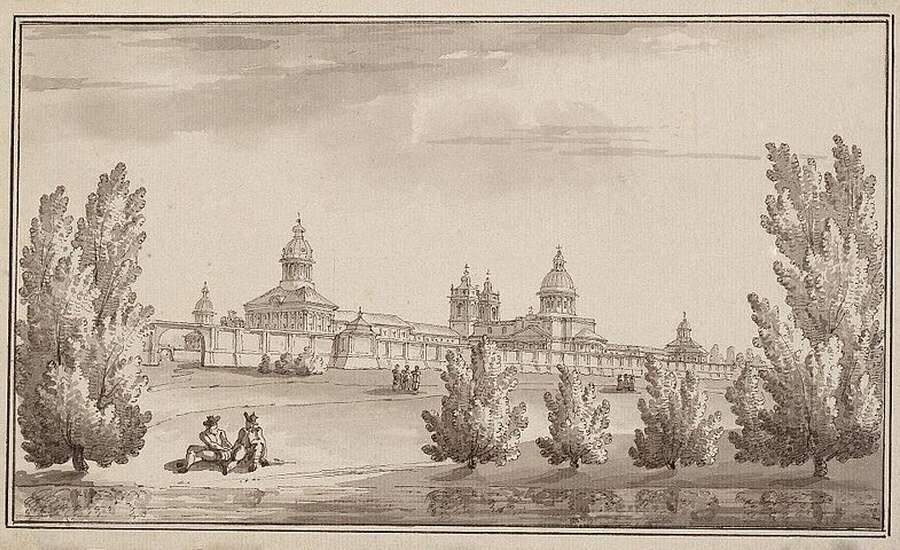
Painting by G. Quarenghi, 1780s, Wikimedia Commons
The Alexander Nevsky Monastery was founded in July 1710 by Peter the Great. It was named after Saint Alexander Nevsky (a medieval prince considered one of Russian history’s most important figures) and is situated near the battlefield where Alexander Nevsky defended Russia against Sweden.
Did you know? Alexander gained his sobriquet ‘Nevsky’ as this battle took place on the bank of the River Neva, St Petersburg’s main waterway.
The Alexander Nevsky Monastery was not just a religious site but home to an alms-house for the disabled and military veterans, a printing press, library, and school. As the monastery was situated outside the eastern boundary of the growing city, its outer walls were designed as fortifications.
The monastery complex was overseen by renowned architect Domenico Trezzini, whose work can be seen all over St Petersburg. He constructed the Annunciation Church in 1724, and in summer of the same year Saint Alexander Nevsky’s relics were brought to the church. Over the next centuries, another 15 churches were built in the monastery.
Did you know? St Petersburg’s main thoroughfare, Nevsky Prospekt, was designed as a straight avenue between the monastery and the Admiralty. Unfortunately, due to a miscalculation, the road veers slightly at Vosstaniya Square!
Three main cemeteries were founded on the monastery’s grounds, in which many famous, influential, and aristocratic figures are buried. The Lazarevskoe Cemetery, Tikhvinskoe Cemetery, and Nikolskoe Cemetery are some of the monastery’s most interesting sites.
Did you know? During Soviet times, the cemeteries were passed to the State Museum of City Sculptures, an institution dedicated to the study and protection of sculptures and gravestones. The Museum continues to operate today.
Shortly after the October Revolution, the Bolsheviks arrived to requisition the property of the Alexander Nevsky Monastery. Local people summoned by the church bells arrived to defend the monastery, and protests and church associations were organised to oppose this persecution.
Did you know? These events were the first open dispute between the Soviet government and the Orthodox Church, and marked the only time the church emerged victorious over the Bolshevik government.
Unfortunately, this was a short-lived victory. In 1922, the relics of Alexander Nevsky were moved to the Museum of Atheism in the former Kazan Cathedral, and in 1933 the monastery was officially closed, its churches looted, and properties requisitioned for state purposes.
Did you know? During the USSR the Alexander Nevsky Monastery housed a vegetable shop, gym, and blood transfusion centre.
Despite Soviet policy some services were resumed in 1957, and by April 2000 the monastery had reopened to visitors and clergy. However only 9 out of its 16 churches had survived the Soviet era.
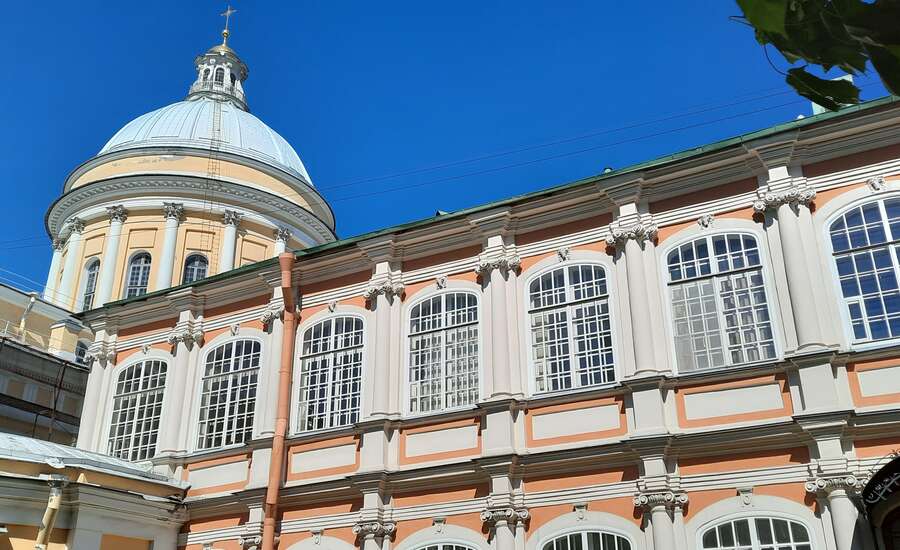
Photo by Express to russia staff
The main cathedral in the complex, which today houses the relics of Saint Alexander Nevsky. Visitors can admire the many shrines and beautifully ornate designs adorning the interior. In front of the cathedral is the Cossack cemetery, a Soviet necropolis where Bolsheviks, workers, soldiers and scientists were buried.
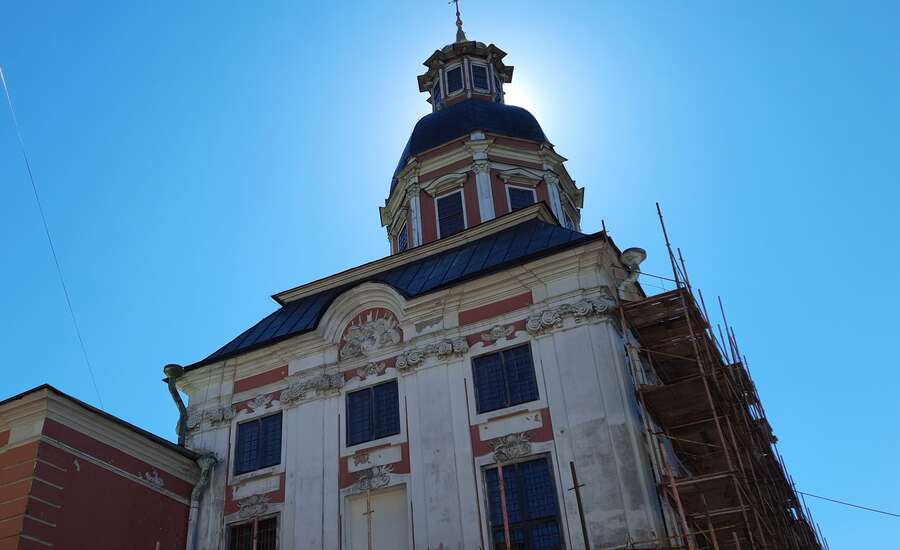
Photo by Express to Russia staff
The first church built in the monastery. The original decoration has unfortunately not survived, but the church is part of the State Museum of City Sculptures, and visitors can see many ornate funerary monuments and tombstones.
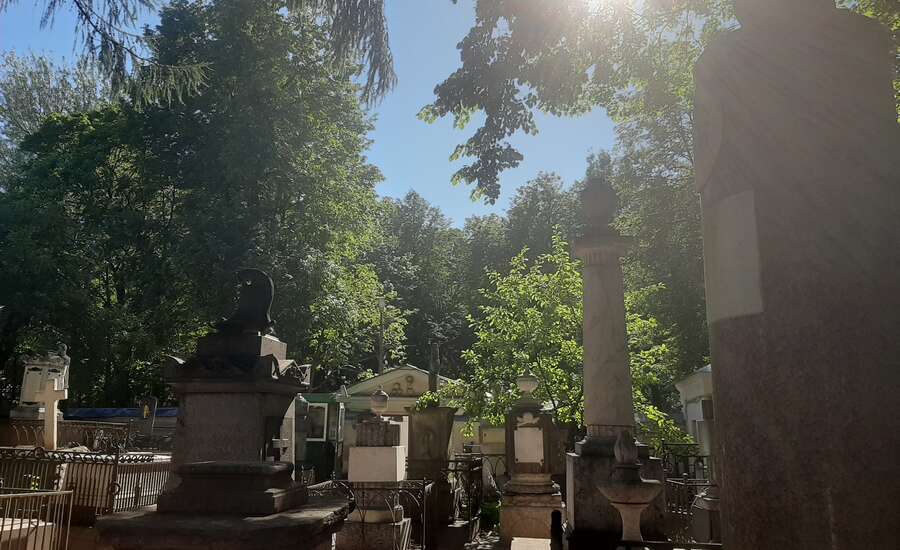
Photo by Express to russia staff
The oldest surviving cemetery in the city, founded in 1717 with the burial of Peter the Great’s wife and son, which became a museum in 1919. Amongst those interred there are Mikhail Lomonosov, known as the founder of Russian science; architect Karl Rossi; and Natalia Goncharova, Pushkin’s wife.
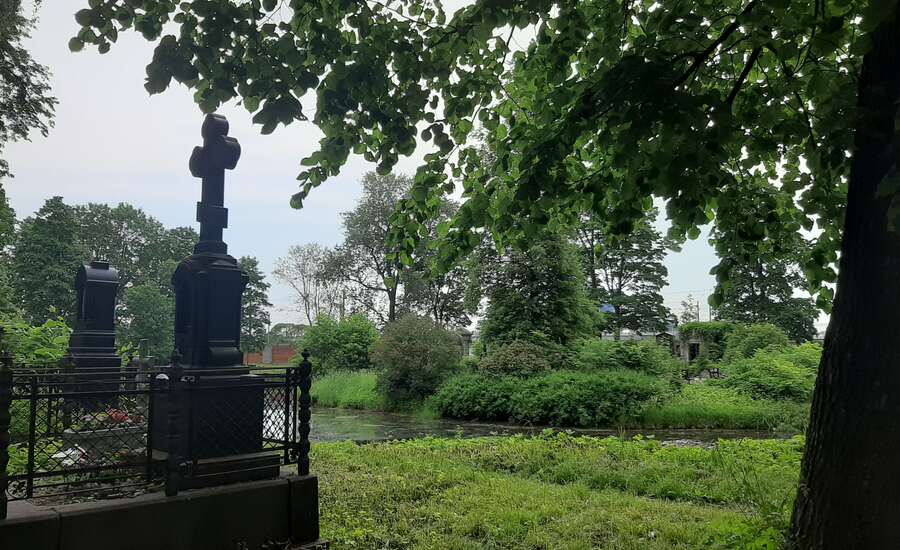
Photo by Express to russia staff
Known as the ‘Necropolis of the Masters of Art’, as many great Russian poets, writers and composers were buried there. Visit the graves of Fyodor Dostoevsky, Nikolai Rimsky-Korsakov, and Pyotr Tchaikovsky, and the Church of Tikhvinskoy Mother of God.
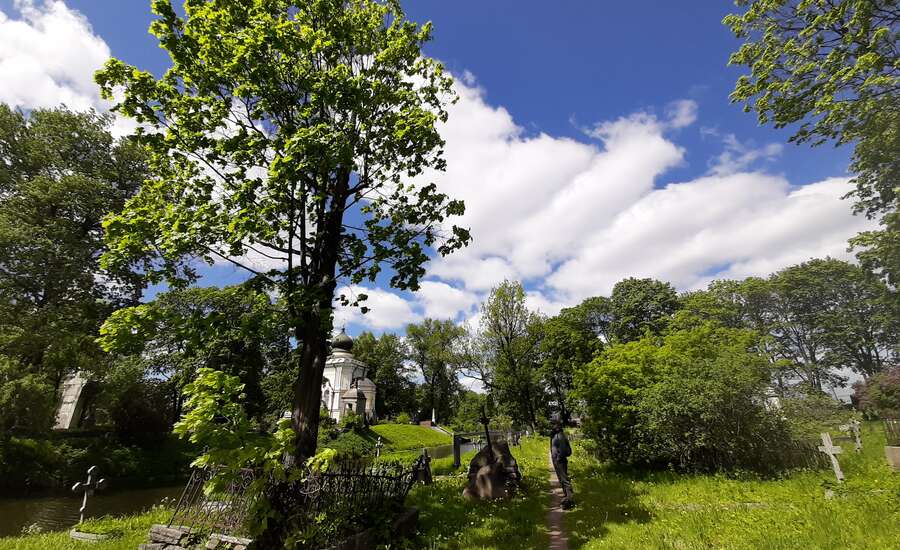
Photo by Express to russia staff
The only cemetery in the monastery which continues to operate today. Amongst those buried there are Lev Gumilev, son of poet Anna Akhmatova; Dmitry Nabokov, father of author Vladimir Nabokov; and former mayor of St Petersburg Anatoly Sobchak. Visitors can also see the Church of St Nicholas of Myra.
This new museum, opened in 2017, showcases the history of the Russian Orthodox Church. Visitors can discover icons, decorative and applied arts, historical photographs, church vestments, and liturgical objects.
Address: Naberezhnaya Reki Monastyrki, 1, St Petersburg, 191167
Metro: Ploshchad Alexandra Nevskovo
Contact Details:
(812) 274-04-09
www.lavra.spb.ru
Opening Hours:
10:00-18:00 daily
Join us on Facebook
We invite you to become a fan of our company on Facebook and read Russian news and travel stories. To become a fan, click here.
Join our own Russian Travel, Culture and Literature Club on Facebook. The club was created to be a place for everyone with an interest in Russia to get to know each other and share experiences, stories, pictures and advice. To join our club, please follow this link.